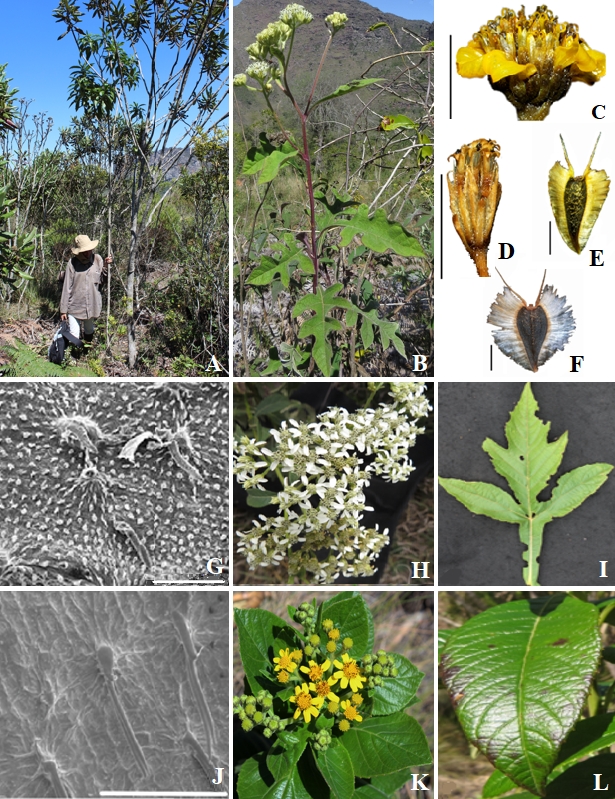A TIME-CALIBRATED PHYLOGENY OF VERBESINA (HELIANTHEAE – ASTERACEAE) BASED ON NUCLEAR RIBOSOMAL ITS AND ETS SEQUENCES
DOI:
https://doi.org/10.24823/ejb.2023.1953Keywords:
Biogeography, Dispersal, Infra, NeotropicsAbstract
Verbesina L. is a genus of the tribe Heliantheae, subtribe Verbesininae (Asteraceae), with distribution in the Americas, where Mexico and the Andes harbour the richest concentration of species. The approximately 325 species in the genus are shrubs, subshrubs, trees and rarely herbs. Despite its high species diversity and biogeographical importance, the only available phylogenetic hypothesis for Verbesina was based on chloroplast DNA restriction site data. In the present study, nuclear ITS and ETS DNA sequence data were used with an expanded taxon sampling, particularly among the South American Verbesina species, to improve phylogenetic resolution and support, clarify infrageneric relationships, and resolve biogeographical questions in the genus. The results of our new analysis corroborate the monophyly of Verbesina, but its current classification into 12 taxonomic sections, based on morphological characters such as phyllotaxis, head size, corolla colour, and presence of ray flowers, is not congruent with the molecular phylogeny, in which most sections are polyphyletic. We also show that Verbesina diverged in the late Miocene of North America, about 8 Ma. At least two independent Pleistocene dispersals into South America across the Isthmus of Panama and along the Southern Andes are evident, beginning around 3.23 Ma (1.27–3.23 Ma) in the Middle Pliocene, and resulting in an extra-Amazonian distribution of the genus in
South America. Diversification in South America began around 2.83 Ma with occupation of the Andes. Colonisation of Brazil is estimated to have occurred around 2.15 Ma, from Andean lineages.

Downloads
Additional Files
Published
Issue
Section
License
Copyright (c) 2023 G.L. Moreira, J.L. Panero , P.W. Inglis , D.C. Zappi , T.B. Cavalcanti

This work is licensed under a Creative Commons Attribution 4.0 International License.
Please read our Open Access, Copyright and Permissions policies for more information.

